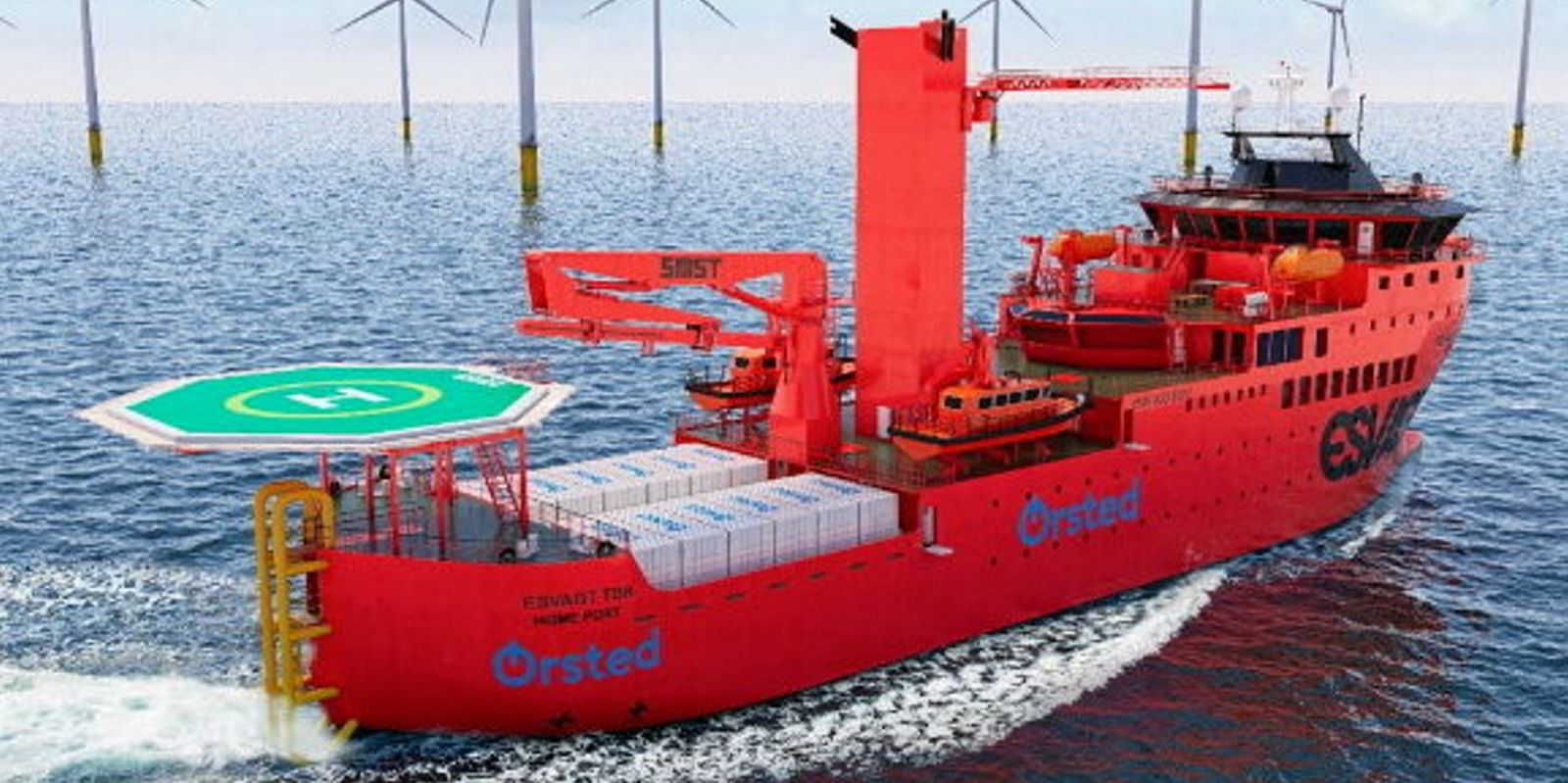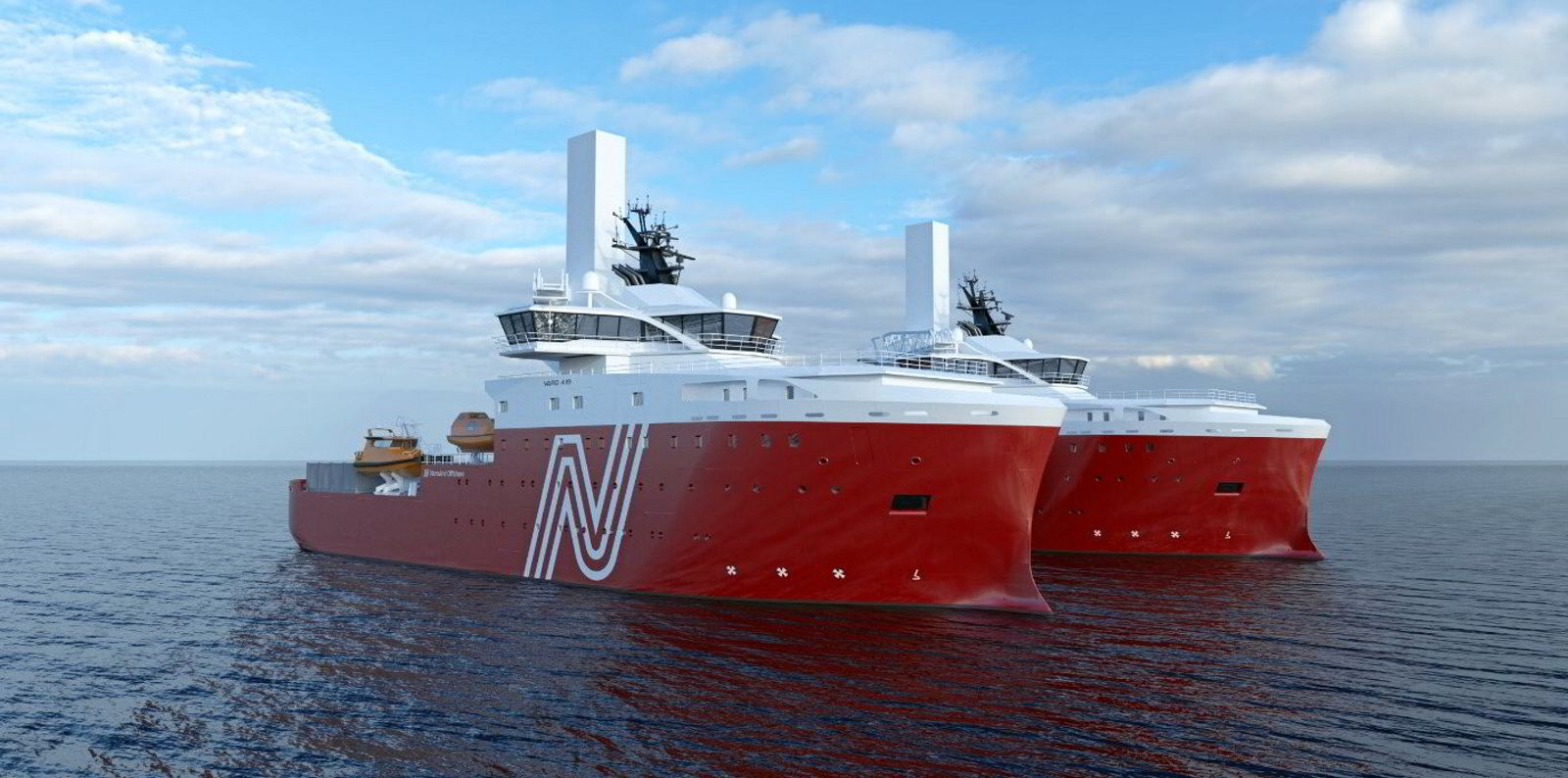UK shipowners James Fisher and Graig Shipping are planning to transform the wind farm support market with a new design concept.
The companies have formed the Diamond Consortium to launch a series of service operation vessels (SOV) developed with Norwegian class society DNV and design partner Ulstein Design Solutions.
The Diamond SOV will use the innovative Ulstein Twin X-Stern, which features two sterns and four main propeller units: two at each end.
This improves manoeuvrability, movement and the ability to stay in position, Ulstein says.
The group wants to support the UK’s ambitious target of 50 GW of offshore wind energy generation by 2030.
The partners claim they have come up with a future-proof design to address the increased demand for SOVs, as well as reducing the cost of energy involved.
The Diamond design addresses the supply chain “chasm” threatening to stymie offshore wind progress with a scalable, modular solution that can be achieved through high-volume series construction to meet developer time and budgetary constraints, they said.
With a significantly reduced energy consumption and increased manoeuvrability, the vessel will also help developers lower their third-party scope 3 emissions in the construction of offshore wind farms, it is claimed.
The consortium is in discussions with major shipyard groups to agree on specifications, together with potential charterers.
The first ship could be in service by the end of 2024.
Flexible blueprint
Jim Hey, group business development director at James Fisher, said the philosophy behind the Diamond SOV has been successfully applied to other vessel segments for many years.
This means developing a specification that meets a market need while allowing for a high degree of customisation and configuration for individual owners and developers.
“We chose to go with Ulstein due to their history of successful innovative designs and believe the Twin X-Stern to be the best choice for service operations of offshore wind farms,” Hey added.
“Building SOVs in series volumes achieves significant economies of scale and delivers a design that can be built in multiple yards simultaneously,” he said.
“Considering the anticipated market demand for SOVs in the UK and beyond by the end of the decade, this exciting new concept places the UK at the centre of enabling global offshore wind ambitions,” Hey concluded.
Proven strategy
Hugh Williams, chief executive of Graig Shipping, said his company has successfully partnered over many years with DNV on the Graig-led Diamond business model.
“We are now applying this proven, scalable strategy to the global offshore wind markets with a particular focus on UK waters, helping to meet the challenging environmental goals in front of us,” he added.
Arnstein Eknes, director of special ships at DNV, explained that with larger turbines being installed further out at sea, vessels and crews will be travelling greater distances and working for longer periods of time in harsher environments.
“The opportunities offered by digitalisation and introduction of sustainable solutions, whilst maintaining high dependability during operations, are vital for the next generation of SOVs,” he added.






